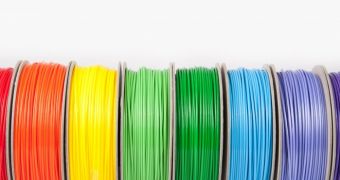There's a lot to take in if you're planning to get into 3D printing, especially if you plan to build your own printer. You can expect a few weeks of frustration and work before you get anything decent out of it, and that's assuming you know what you want and have a rough idea of how to achieve it.
There's a lot to learn though even before choosing a printer to buy or a kit to build. One thing that plenty of people may be wondering is whether there's any difference between 1.75 mm and 3 mm filaments. These are the two common sizes, but there's rarely any explanation of the difference between them, if there is one.
The short answer is that there isn't any. While, technically, printing with 1.75 mm filament or with a 3 mm one isn't exactly the same, the differences are too small to count in practical terms.
And, as with almost everything else having to do with desktop 3D printing, there are advantages and disadvantages to both.
A lot of other things make a much bigger difference to worry about filament size. Things like consistency between filament batches, storing conditions, calibrating your printer, and so on are much more important.
The only thing to look out for though is the diameter of your nozzle. Smaller nozzles will have a harder time dealing with larger filaments and the other way around.
This Reddit thread does a good job spelling out the exact differences between filaments. Particular conditions, like your printer, the conditions in which you work, and so on may make you favor one size over the other.
But, in practical terms, it's best to see what type of filament your local suppliers offer and what you can get for a cheaper price, assuming this doesn't sacrifice quality too much.

 14 DAY TRIAL //
14 DAY TRIAL //